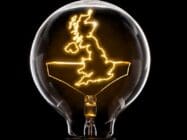
A new ISGAN policy brief addresses complexity and uncertainty in grid planning processes to accelerate the energy transition.
The energy transition is bringing profound changes across the sector and not least to the networks, with the need for their significant expansion for large-scale electrification and clean energy integration coupled with the universal adoption of digital smart grid technologies towards 2050.
With this in mind ISGAN, in partnership with IRENA and a group of experts from across the sector from 12 countries, has undertaken an evaluation of grid planning practices with the aim to cut through the complexities and uncertainties for policy makers and sector stakeholders.
“Overcoming these different complexities and uncertainties necessitates planning processes that are efficient, transparent, legitimate and guided by sound principles and effective steering mechanisms,” states ISGAN.
Have you read?
Smart grids and digitalisation – more effort needed says IEA
Grid planning in times of changing business models
Moreover, a key consideration was that the grid planning should align with and act as an enabler of the UN’s Sustainable Development Goals of which the energy goal on access to clean and affordable energy is SDG 7.
Key recommendations of the policy brief for grid planning in uncertain times are as follows.
- Cohesive scenarios, nationally and where possible regionally coordinated, should be developed that show the necessary electrification measures required to achieve net zero emissions.
- Grid development plans should be ensured to enable deep decarbonisation in line with the developed scenarios, with political guidance likely to be necessary to balance conflicting goals between local and national levels as well as between economic, social and environmental considerations.
- Cost-benefit analyses should be updated to properly capture the values of sufficient grid capacity and account for social, environmental and resilience metrics, based on a clear and transparent grid planning assessment framework.
- Regulatory frameworks should be ensured to foster both conventional and smart grid solutions contributing to the clean energy transition. Tools such as regulatory sandboxes could be extensively used to support the deployment of innovative solutions.
- Workforce strategies should be developed to recruit and train the skills to satisfy the short and long-term competence needs. These include policy and regulation, engineering, environmental impact assessment, behavioural sciences and urban and rural planning.
- Stakeholder interactions between government, industry, research and other players including local communities should be promoted at all levels of the grid planning process.
- Awareness and understanding of the role of the grid for meeting the SDGs should be increased, with clearer linkages of energy to supporting other goals such as poverty reduction and climate action.
The initiative was led by Helena Lindquist, director of the Swedish sustainability knowledge sharing company LightSwitch from ISGAN’s Communication working group, and Susanne Ackeby, an R&D engineer at the Swedish research institute RISE from ISGAN’s Power Transmission & Distribution Systems working group.








